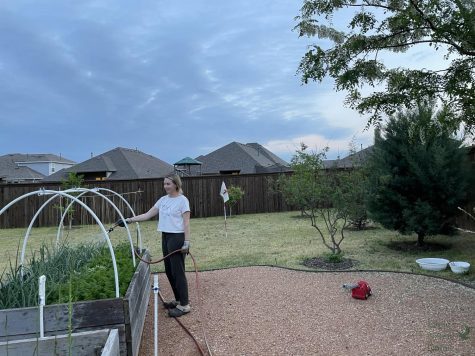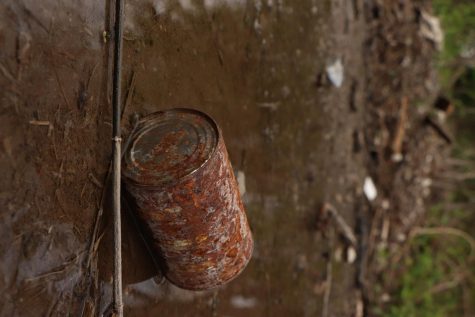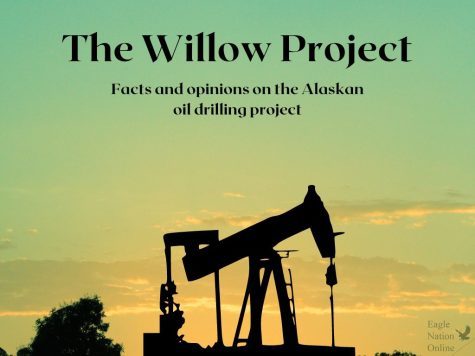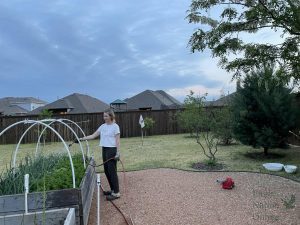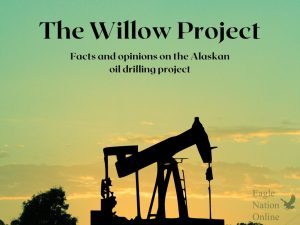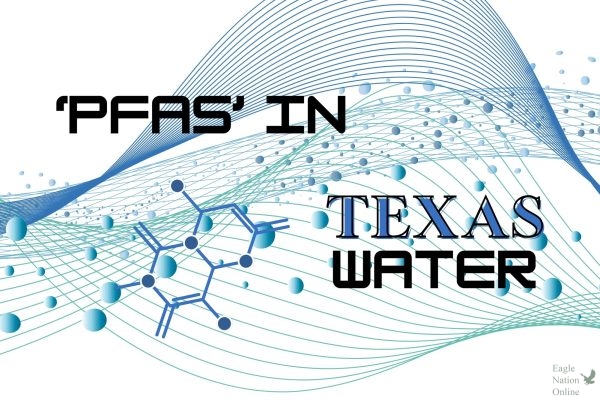Analysis: Rapid urbanization poses threats to environment
Prosper residents share concerns for local ecosystem
This photograph, taken by Gianna Galante, provides an example showcase of construction taking place in Prosper. Urbanization continues in and around the town of Prosper. According to sources in the attached news analysis by reporter Lauren Clayton, environmental pollution, wildlife displacement and natural habitat destruction may signal the differing effects caused by urbanization.
As the fifth fastest-growing city in Texas, it comes as no surprise that Prosper is rapidly expanding its number of stores, homes and roads to accommodate the sudden boom in population. As an overview, the town listed 2,097 citizens in 2000, but increased to a population of 31,700 in 2022. As of 2023, Prosper has a population of 34,136 people, more than 15 times the size of what it was only 23 years ago. This large influx of people, though beneficial to the community, poses many threats to the environment and land around Prosper.
To locals living within and around Prosper, the most prominent change, noticed on this April 22 Earth Day, is the loss of farmland and fields. Not long ago, Prosper was known as a small farming community, like the others surrounding it.
“There are no cows or fields anymore,” sophomore Sarah Goddard said. “So they’ve all had to be moved away. There are a lot of fields, and fields are in the environment. All the animals and organisms there have had to either die or move.”
With the removal of these native organisms and the destruction of rural land comes further complications and the disruption of Prosper’s natural ecosystem.
“Rapid urbanization can have catastrophic impacts on local ecosystems if not appropriately addressed within city planning,” Biology teacher Alysha Jaballa said. “Loss of habitat for local organisms, decreased biodiversity, depleted access to freshwater sources, not to mention increased air, light and water pollution.”
Another threat posed by the expansion of a town into a once-rural area is the depletion of plants. Trees, for example, provide sources of oxygen for humans, food and shelter for other organisms and a natural defense against water pollution and soil erosion. Yet, the process of building has forced the removal of many.
“Whenever we used to drive (on the route to) my house, it was like a canopy of trees, and, I mean, all these trees are gone,” Environmental Systems teacher Jenny Mills said. “It’s insane. It’s so sad.”
The population of Prosper continues to grow, and the numbers will continue to grow at a rate that means infrastructure will have to expand further than it already has.
“When I started working for Prosper ISD, the Kroger on Preston was the new biggest thing in the area,” Jaballa said. “Within just eight short years, Prosper now has multiple multi-complex shopping areas, developed highways and overpasses, as well as numerous new residential developments.”
Though Prosper cannot stop its expansion due to its ideal climate, opportunity range, and housing, the community may be to help its ecosystem by becoming aware of these threats to the environment.
“Urbanization is a difficult topic to assess from the perspective of a human, because on one hand, the human population is increasing, and, therefore, we need additional resources to help support that developing population,” Jaballa said. “However, on the other hand, those resources don’t just come from nowhere. Every action has a consequence, and I think if we were to better address those potential consequences with initial planning, we could try to do the least amount of damage possible.”
Editors note: This article was updated on April 24 to add in more leads to other environmental information.
Your donation will support the student journalists of Prosper High School. Your contribution will allow us to purchase equipment and cover our annual website hosting costs.






